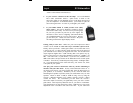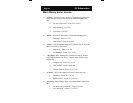
SV Subwoofers
Page 10
together, or not). Since some of your room’s bass might come from main,
center and/or surround speakers, as well as your sub, getting these bass wave
forms to arrive in a complementary fashion is the difficult job of the phase
control. Essentially, “phase” varies the timing of the bass waves coming from
the sub. But don’t despair if you don’t hear much difference, especially if
running a single subwoofer. Bass “cancellation” will vary by room shape,
volume, and the bass frequency. No one setting is likely to ever be perfect. One
technique to optimize phase is to find a nice “bassy” loop (such as the menu of
the “Godzilla” movie DVD) and measure the loop’s SPL response at various
bass peaks. As the loop runs, you can have an assistant adjust the phase control
in small steps while you measure. When you see the most response on a given
bass passage, typically that’s the setting with the least cancellation (for the
frequencies of the demo loop).
If you have a pair of subwoofers, calibrate with only one subwoofer on at a
time. When finally switching on both SVS’s (assuming you calibrated both
individually to the exact same level) you should have a combined reading of
+6dB more than when one sub was playing. If you do not, have an assistant
slowly move the phase on only one subwoofer a bit until you get about +6dB
more than with one sub playing. This ensures your subs are not “canceling”
each other out due to poor phase alignment. Again, all measurements must be
from your prime viewing seat.
Line In. Use your sub’s “Line In” jack to connect the subwoofer to the output
jack of your receiver/processor. A simple RCA to RCA cable is all you need.
Auto-On. Your Powered Box allows itself to be in an “Auto-On” mode… or
“On” all the time. With the former setting (the switch in the “Auto” position)
your subwoofer will “sense” that a DVD or CD etc. has begun and switch its
audio circuits on immediately (the “hard” power switch mentioned below must
be on, naturally). A few minutes after a movie, the Auto-On light will turn Red,
switching the sub back off. When running (and sensing a signal) the Auto-On
LED will be green. Sometimes, with very low listening levels, your subwoofer
might not get enough of a bass signal from your surround sound processor to
“trip” the Auto-On circuit. Should you ever find this to be the case you may
leave this switch to “On”, or turn up the receiver’s subwoofer level some (be
sure to recalibrate channels levels with your meter afterwards).
Power. This heavy-duty, two-position switch next to the power cord will
completely cut the power to your sub amp. Flip this switch to off before you
ever move the sub or change inputs or outputs.
A/C connection. Plug your sub into a dedicated A/C outlet. “Convenience”
outlets of typical receivers often don’t provide the needed current for your SVS
high power amp. Avoid them.
Fuse. Mounted behind a small door near your cord, user replaceable (as spare is


















